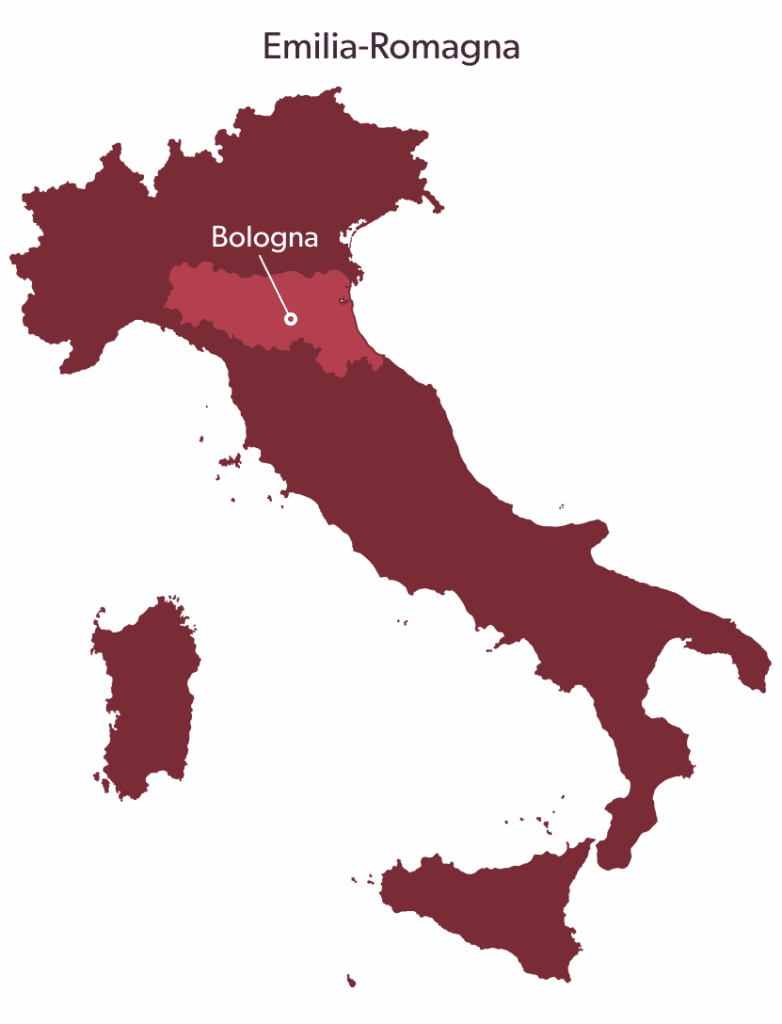Mortadella Bologna IGP is a charcuterie product that belongs to the category of cooked sausages, prepared with a mixture of pork.
The origins of Mortadella Bologna IGP probably date back to the Etruscan era, hypothesized by the presence of other types of mortadella, albeit with different characteristics, in the territories once inhabited by the Etruscans.
The name could derive from the Latin words murtatum, or minced meat in a mortar, or myrtatum, sausage made with meat dressed with myrtle berries. In support of the Latin origin of the name, there is proof of a stele from the Imperial Roman era preserved in the Archaeological Museum of Bologna, in which seven pigs are portrayed on one side and a mortar with pestle on the other.
Evidence of the link with the city of Bologna can be found as early as the fifteenth century, when the Visconti of Milan gladly offered the city a fatty ox every year in exchange for fragrant mortadellas. Bologna, on the other hand, guaranteed this product’s quality, and, in 1661, Cardinal Farnese issued a proclamation that codified the production of mortadella, providing one of the first examples of regulations similar to the current ones of the DOP and IGP brands.
The manufacture and application of the required garantie seals were the responsibility of the Corporazione dei Salaroli, one of the oldest in Bologna, which already in 1376 had a mortar with a pestle as its coat of arms.

